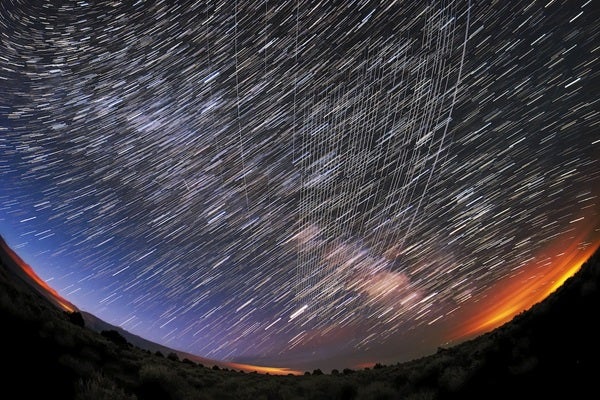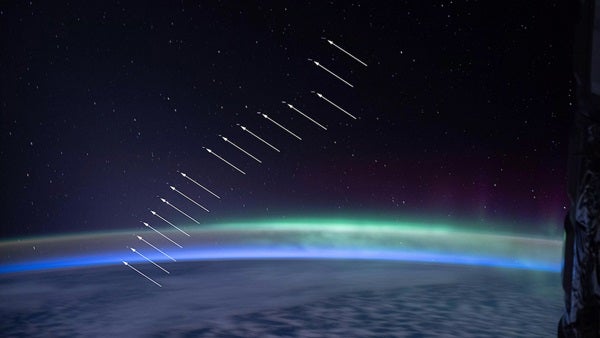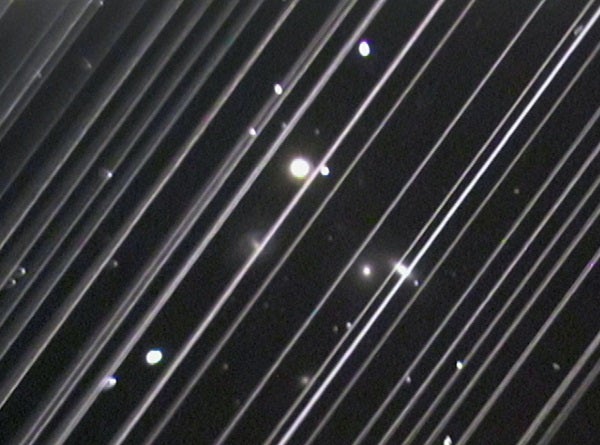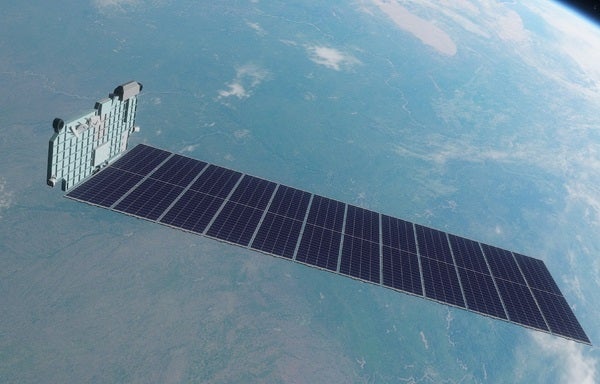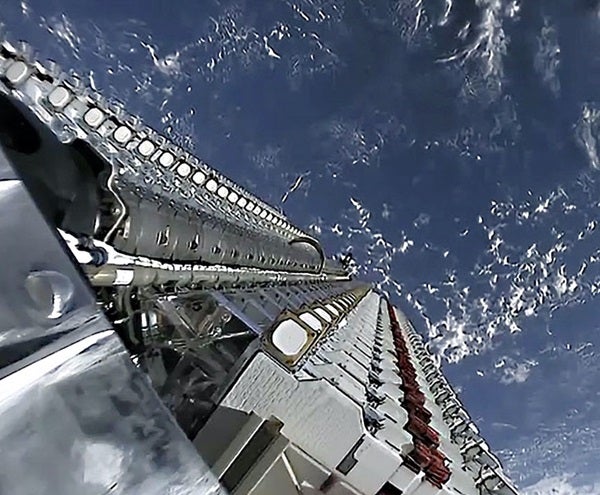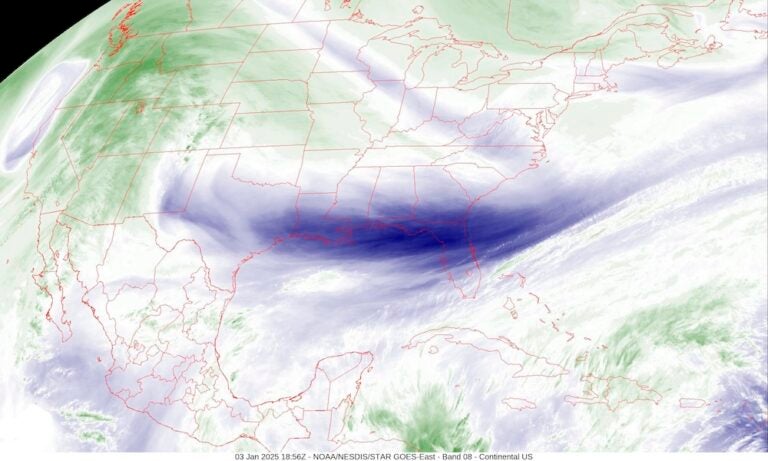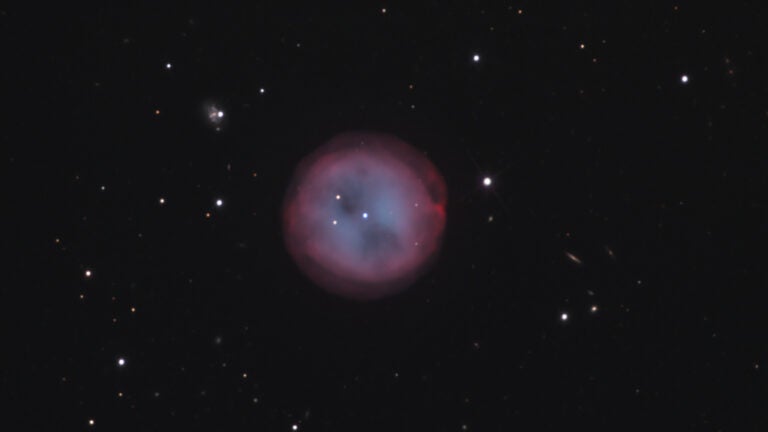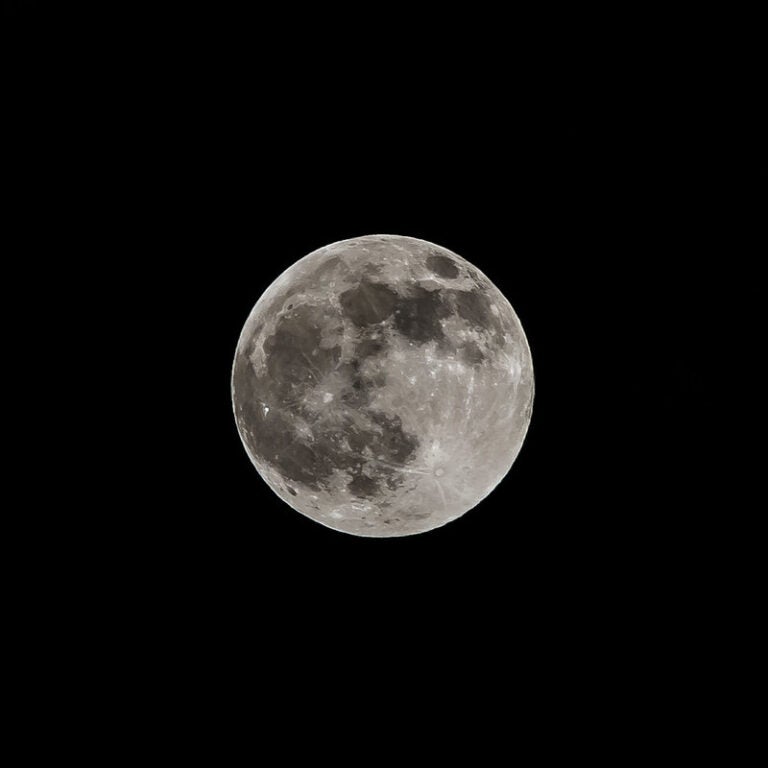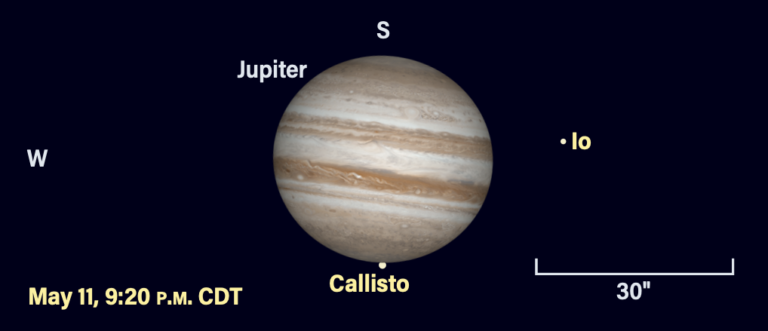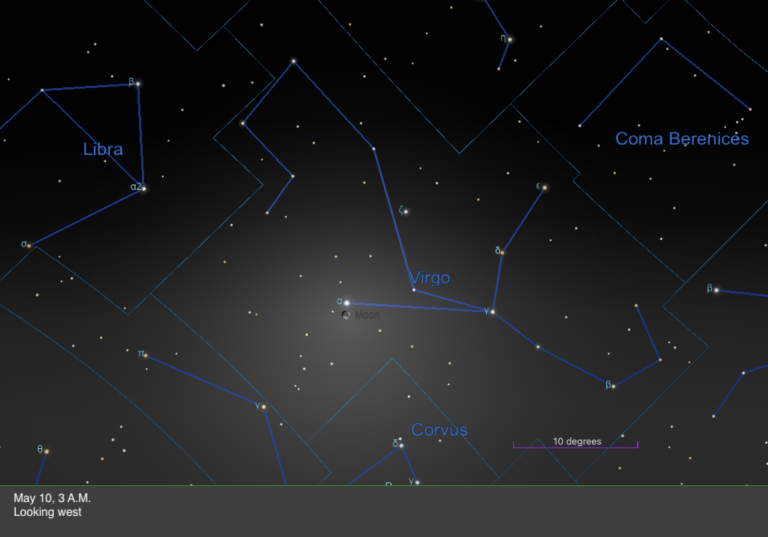On the night of May 25, 2019, astronomy educator Victoria Girgis was conducting a public stargazing session at Lowell Observatory in Flagstaff, Arizona. A telescope and camera were trained on NGC 5353/4, a magnitude 11 galaxy group in Canes Venatici, when suddenly the image was photobombed by an extremely bright train of satellites streaking through the field of view.
Around the world, astronomers were seeing the same thing — and quickly realized the culprit: Just two days earlier, SpaceX had launched a Falcon 9 rocket carrying the first 60 satellites of the company’s new Starlink satellite system, designed to provide broadband internet access around the world.
The astronomy community and SpaceX were both caught by surprise at just how bright these new satellites were. Prior to 2019, there were only about 200 satellites visible to the unaided eye. But with a visual magnitude of 3 or brighter, Starlink satellites outshone all but 170 stars.
It was a watershed moment in humanity’s use of space. Today, we live in a world where low Earth orbit (LEO) is no longer predominantly the domain of major national agencies like NASA. Private companies can launch massive fleets of satellites, limited only by their vision and resources. SpaceX plans for its first generation of Starlink to have about 4,400 satellites, over half of which have already been launched. In December Starlink won approval to launch 7,500 Gen 2 satellites, and plans to expand to 30,000 satellites, with routine controlled deorbits and new launches to replace old hardware.
And Starlink is but a single constellation. Other operators like Amazon’s Project Kuiper (planning to begin launches of prototypes in early 2023 and eventually have a constellation of 3,236 satellites) and OneWeb (with 600 satellites set to be operational by early 2023) have their own fleets on the way. Plus, dozens of national and private agencies around the world have expressed interest in their own constellations.
The situation is clear: We are racing toward a cloud of bright LEO satellites numbering in the hundreds of thousands that will fundamentally change the night sky. And we are only just beginning to understand the ramifications for astronomy — and humanity — of this massive sea change in our use of orbital space.
The life cycle of a satellite
It takes LEO satellites about 90 minutes to orbit Earth, zipping along at around 17,500 mph (28,200 km/h). This makes bright ones easy to spot, reflecting sunlight as they steadily transit across the sky, often to the delight and curiosity of novice observers. But after the novelty has worn off — and, say, four more have been spotted inside 15 minutes — the implications are a bit staggering.
Satellites bound for an LEO constellation appear brightest and most clumped together in the few days or weeks after launch. Thus, it’s during this time that they have the greatest visual impact. Eventually, using thrusters, the satellites make their way to a higher orbit, where they will spend most of their operational life. From there, they are fainter, and telescope cameras are more likely to see only one or two streaks at a time. The width and brightness of these streaks can vary with many factors, including the size of the telescope, the satellite’s altitude, the wavelength of light being observed, and the shape and material of the satellite itself.
Typical LEO satellites are designed for a lifetime of up to five years, and U.S. operators are required by the Federal Communications Commission to have a plan to deorbit their satellites to avoid contributing to the growing amount of space junk. Thus, their destiny is to be a human-made meteor — burning up in Earth’s atmosphere as a bright, short-lived fireball. Of course, most satellite operators want to maintain (or grow) their constellation, so a satellite’s demise does not change the overall situation; one or more will take its place.
Scientific impacts
The reach of ground-based light pollution is limited. Gloriously dark starscapes do still exist, draped across remote mountaintops and national parks. But this will not be true in a future where light pollution also comes from above, blanketing the sky with large and bright LEO satellite constellations.
How much these satellites will ultimately affect our ability to do cutting-edge science from ground-based astronomical observatories is not entirely clear yet. This is still a new and rapidly evolving problem. So far, research shows that satellite constellations have varying impacts on different kinds of science. Those impacts depend on how bright and wide each individual satellite streak is and how “glinty” it behaves — when surfaces of the spacecraft directly reflect sunlight, like the glare off a shiny car.
One study from researchers at the Zwicky Transient Facility published in The Astrophysical Journals Letters in January 2022 found that satellite streaks had not significantly impacted their work — yet. But this and other studies predict a startling stymieing of discoveries in the next few years.
It’s clear that any investigation that relies on detecting objects close to twilight will be severely hindered, as more satellites are illuminated by the Sun at that time. For example, discovering near-Earth asteroids — including potential threats that could impact Earth — will be significantly more challenging.
In addition, the ever-present disruption of satellite streaks, even one or two per image, means that it will be a lot harder to obtain a smooth background sky to calibrate observations. This can affect measurements of key phenomena like gravitational lensing — the bending of light by massive objects, like galaxy clusters. So, if you were hoping to learn more about the fate of our universe by studying how this effect very subtly alters the distribution of galaxies we see in the sky, you may be in for a rough ride.
Any study relying on spectroscopy — breaking up light into its constituent wavelengths to investigate an object’s motion, elemental composition, and more — will be susceptible to surprise satellite photobombs. And any survey that combs through images searching for changes — distant explosions or stellar flares, perhaps — is likely to be regularly fooled by glints.
Finally, as the active satellite population grows, so will the amount of space junk, from sources like collisions, rocket explosions, and even micrometeroids sandblasting away bits of solar panels. This diffuse cloud of debris will reflect and scatter light, which studies suggest will brighten the overall sky background.
All these impacts are generally greatest for wide-field observatories with large mirrors and sensitive cameras, like the Vera C. Rubin Observatory, which is under construction in Chile and due to begin a 10-year survey of the southern sky in 2024.
But radio astronomers are also extremely concerned, as all these satellites transmit information down to Earth, which can interfere with astronomical observations. Regulatory agencies have reserved some slivers of radio frequencies for science, but the spectrum is already extremely crowded and some radio-frequency interference (RFI) can bleed into protected bands.
Until recently, much RFI came from satellites in the geosynchronous and geostationary belt that appear stationary, or from a handful of satellites in medium Earth orbit that trace predictable paths across the sky. Thousands of satellites in LEO screaming all over the place, day and night, are a different story altogether.
Broader implications
Of course, science is not the sky’s only purpose. It is also important to remember the bigger picture. The proliferation of LEO satellites makes it harder for the public to view and enjoy the natural night sky, increases the likelihood of collisions that may impact space operations, and threatens to erase the knowledge and traditions of Indigenous peoples around the world that are based on the night sky.
It also has environmental repercussions. Each rocket launch contributes emissions to the atmosphere and the fiery cremation of reentering satellites deposits microscopic debris. Of particular concern is aluminum, which is much more common in spacecraft than in natural micrometeoroids. Burning these particles creates aluminum oxides, which scatter light and could even alter Earth’s overall albedo.
The debris that does make it through to the lower atmosphere and to Earth’s surface may also disrupt marine ecosystems and put aircraft and people on the ground at risk. One recent study estimates that with a population of 16,000 satellites in LEO, fragments from reentering satellites would kill a person roughly every four years on average.
Satellite constellations may also disrupt animal life in ways we don’t yet understand. For instance, many species use the stars and Milky Way to orient themselves, including birds that migrate at night, and it’s possible that low-flying satellites that appear as new “stars” in the sky may confuse them.
In an April 2022 perspective in Nature Astronomy, a group of astronomers (including one of the authors of this article) argued that LEO should be considered as an ecosystem that needs care and regulation, just like the oceans and atmosphere.
The American Astronomical Society (AAS) has also convened two workshops, dubbed SATCON1 and SATCON2, on satellite constellations. One of the recommendations to emerge from those workshops — held in 2020 and 2021 — is to slow or stop the pace of launches until we can better understand all the issues and meaningfully develop solutions. However, there do not appear to be any plans at the moment among satellite operators to slow launches or establish a more consensus-based approach for utilizing orbital space.
Managing the impacts
Immediately after the first Starlink satellites launched in 2019, the astronomical community reached out to several satellite operators — including SpaceX, Amazon Kuiper, and OneWeb — to try to work together to reduce the impact on astronomy. So far, most of the design and engineering work to achieve this goal has been with SpaceX, as they are the first with a large satellite fleet in operation.
SpaceX has experimented with numerous strategies to reduce the amount of light Starlink reflects back to Earth, such as painting various components of satellites black. The company also tried added visor shades to block sunlight from reaching reflective surfaces, and reoriented satellites so that less of the reflective surface is pointed toward Earth. However, SpaceX found that the visors interfered with the satellites’ communications and also added a significant amount of drag, requiring satellites to burn more fuel to stay aloft. In place of the visors, SpaceX has added a special coating designed to reflect light strongly in one direction, away from Earth.
These early experiments demonstrated that Starlink satellites in their operational orbits could be darkened from visual magnitude 5.0 to about 6.0 or 6.5, close to the limit of the unaided eye. However, they appear brighter in redder wavelengths, which could still impact infrared astronomy.
These efforts reveal the complex nature of the sudden transformation in humanity’s use of LEO. On the one hand, we must be clear: Even the most heroic efforts by satellite operators cannot eliminate a substantial impact on astronomy. The SATCON1 workshop concluded that a visual magnitude of 7.0 for satellites at altitudes of 370 miles (600 kilometers) or lower was needed to mitigate the most severe impacts on images from facilities like the Rubin Observatory. This includes the removal of crosstalk trails — secondary image artifacts caused when a bright object affects the readout of other pixels. But this still leaves the main bright streak to be dealt with — a complex problem to correct.
The use of lower altitudes — which can reduce how long satellites are visible overnight — is also a compromise, as it is less effective for telescopes at higher latitudes. And the lower the constellation, the more satellites are needed to achieve global coverage. In the end, there is no way to make LEO satellites invisible even to the smallest amateur telescopes, let alone 8-meter behemoths.
On the other hand, we acknowledge the substantial time, effort, and money SpaceX has invested in redesigning its satellites. The interaction between astronomers and satellite operators has been both constructive and cordial.
The good news is that, in principle, it appears most Starlink satellites can be made invisible to the human eye once they are in their operational orbits. And although the internet and communication services offered by companies like SpaceX are not humanitarian missions, they have support from many geographically isolated constituencies and the potential to benefit those afflicted by natural disasters and other crises.
Charting the future of space
The transformation of human access to space is not a black-and-white issue. Astronomy is just one of many communities that can lay claim to a legitimate use of space. Comprehensive solutions to managing space in this new era will need the creativity and cooperation of many more parties, such as regulatory bodies and environmental groups. And it will require elevating the voices of those who are traditionally ignored and marginalized each time a new frontier is repurposed.
This is a challenge, but it can also be an opportunity. The world is sorely in need of such collaborative efforts, and perhaps the frontier of space can serve as a canvas on which humanity can seek visionary solutions.
If you’d like to help, the authors welcome you to apply to join the new International Astronomical Union Centre for the Protection of the Dark and Quiet Sky from Satellite Constellation Interference (https://cps.iau.org).
We also encourage you to seek out a dark site to marvel at the night sky, because it may soon not look the same.
How to dim a satellite
There are numerous strategies that can potentially reduce the impact of satellite trails on astronomy. However, many of them come with trade-offs.
Orbiting at a higher altitude will reduce a satellite’s apparent brightness to ground observers. But it will also be lit by the Sun for more of its orbit, making it visible across more of the sky and during more of the night.
Satellites can be oriented so reflective surfaces like solar panels reflect light away from Earth, but this can reduce the amount of sunlight they gather and the power they generate. SpaceX says it will design its next generation of Starlink satellites to cope with less power.
To limit the amount of light reflecting off the bottom of the satellite body, SpaceX tried installing sun visors. However, the company said that these interfered with the laser communication links the satellites need to expand their coverage to remote regions. The visors also increased drag, removing the satellites from orbit more quickly. As an alternative, the company is developing mirror films that can scatter and direct light away from Earth. Using darker materials and black paint can also limit reflectivity by absorbing light. However, it can also raise temperatures and reduce the performance of components like solar arrays.

